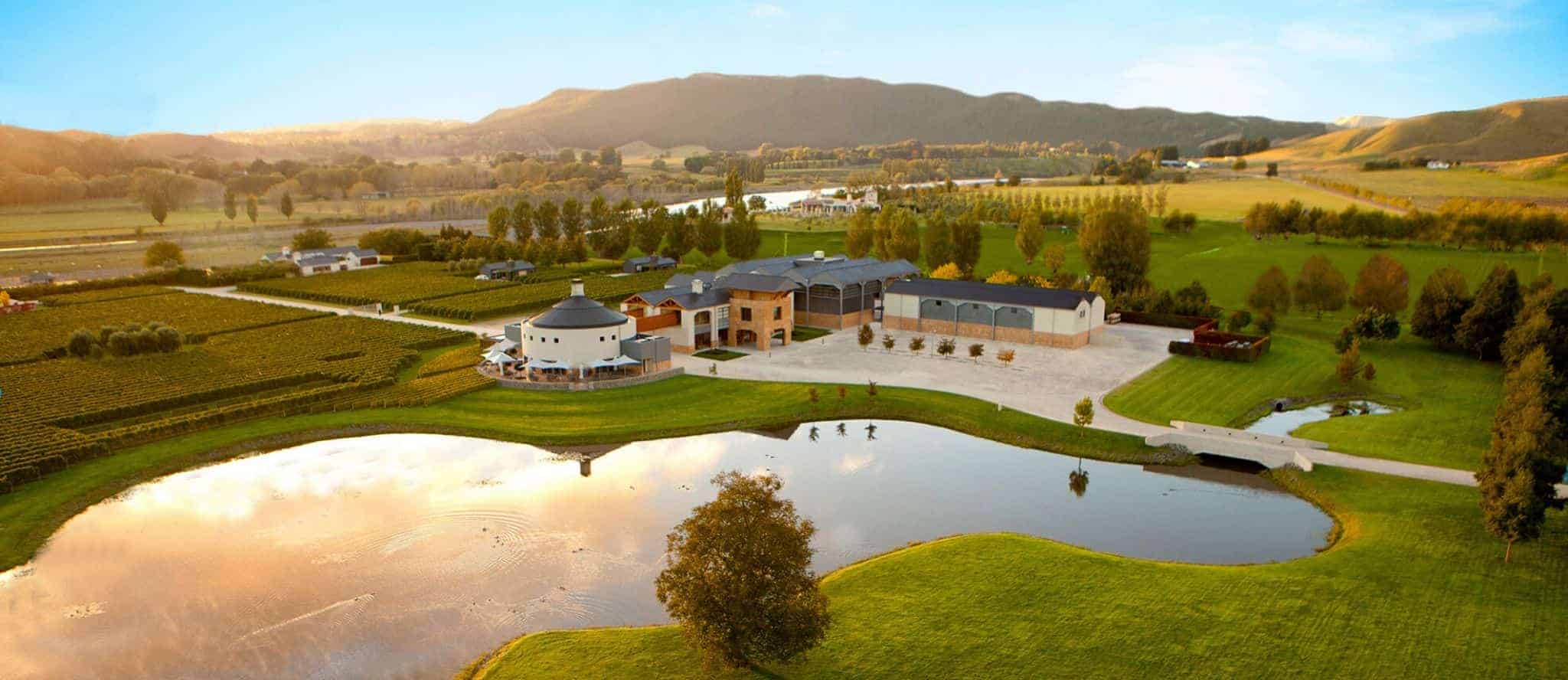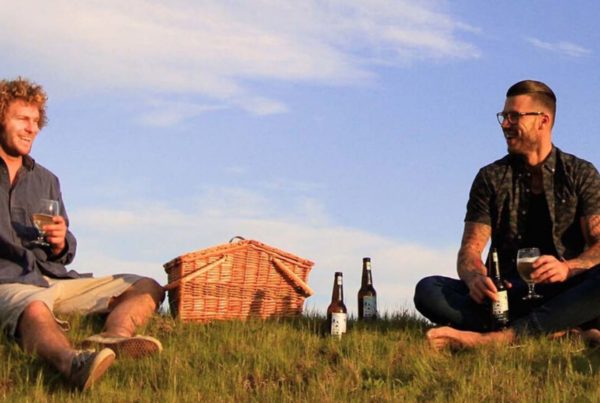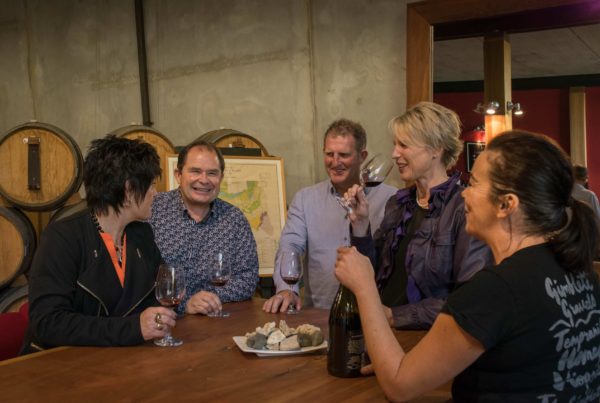Hawke’s Bay Wine
Hawke’s Bay is the oldest wine region and second largest wine region in New Zealand. To Kiwis, it is a little odd that the region isn’t as well known to international tourists as it is here in NZ. So, if you are planning a trip to Hawke’s Bay or New Zealand there are a few things you should know about Hawke’s Bay Wine, NZ’s premium wine growing region.
Firstly, Hawke’s Bay is known throughout the country as the fruit bowl of New Zealand because of its strength in growing a range of export quality fruit and vegetables. Hawke’s Bay has high sunshine hours, low – moderate rainfall and the huge variation of alluvial soils in the region (left behind as the 5 major braided rivers have changed course over the years) which is ideal conditions for horticulture.
Another factor that has contributed to Hawke’s Bay establishing itself as a premium wine region is the different terroirs available to grow grapes. The region has a number of great coastal vineyards with cooling sea breeze, high altitude vineyards such as the new Rays Road Kumeu River Estate site focusing on Pinot Noir & Chardonnay & Hot free draining sites such as the famous Gimblett Gravels that are similar to the vineyards of Bordeaux and the north facing slopes with no machinery access similar to some of the most regarded vineyards of the Old World.
Hawke’s Bay isn’t restricted by Old World grape traditions or restrictions which means winemakers have the ability to grow a number of grape varieties that they think will be best suited for Hawke’s Bay’s unique terroir and they do it well!
Below is a list of the wines you should come across while you visit Hawke’s Bay.
Hawke’s Bay Red Wine
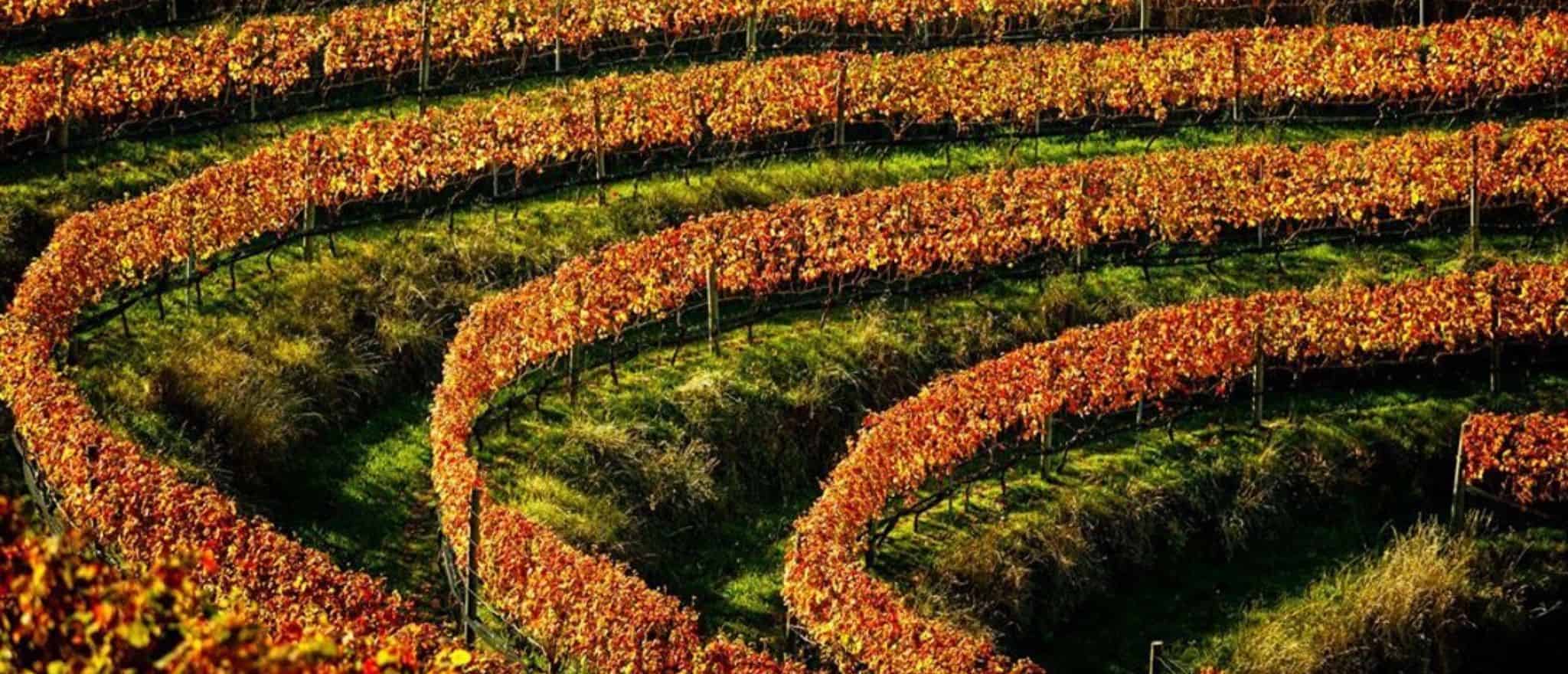 Despite New Zealand’s reputation for aromatic and zippy white wines, Hawke’s Bay is best known for producing medium – full bodied premium red wines. When you visit Hawke’s Bay on a wine tour or a self guided visit, the grape varieties you will most often come across are the traditional french varieties (although more and more we are seeing a few Italian & Spanish varieties sneak in).
Despite New Zealand’s reputation for aromatic and zippy white wines, Hawke’s Bay is best known for producing medium – full bodied premium red wines. When you visit Hawke’s Bay on a wine tour or a self guided visit, the grape varieties you will most often come across are the traditional french varieties (although more and more we are seeing a few Italian & Spanish varieties sneak in).
The reason Hawke’s Bay has favoured the french varieties over some of the less known varieties is likely because Hawke’s Bay’s climate is nearly identical to Bordeaux and Rhone which are the spiritual homes of Merlot, Cabernet Sauvignon and Syrah. They also happen to be two of the most famous wine growing regions in the Old World.
Syrah from Hawke’s Bay
Syrah is considered the darling grape of Hawke’s Bay. It’s signature profile is one with plenty of dark fruits and black pepper. With a little bottle age expect to find olive tapenade and earthy notes. Some of the best Syrah wines come from the famous Gimblett Gravels region or right next door in the Bridge Pa Triangle which are often the hottest parts of the region. When tasting Hawke’s Bay Syrah do not expect big jammy reds like the Australian Barossa Valley Shiraz, instead look for subtle characters, violet perfumed linear wines that match terrifically with food.
Despite the best examples of Hawke’s Bay Syrah coming from the hotter subregions in Hawke’s Bay, winemakers have focused on picking the fruit early to ensure the fruit isn’t over-ripe and maintains it’s signature structure for age worthy wines. If there is only one type of wine you should try from Hawke’s Bay, it must be Syrah!
 Recommendations: One of the most iconic New Zealand Syrahs produced is the Trinity Hill Homage. Trinity Hill is usually a stop on the Bay Tours Gold Reserve Wine Tour.
Recommendations: One of the most iconic New Zealand Syrahs produced is the Trinity Hill Homage. Trinity Hill is usually a stop on the Bay Tours Gold Reserve Wine Tour.
Merlot & Merlot dominant blends from Hawke’s Bay
The most planted red wine variety in Hawke’s Bay is Merlot. In 2016 over 1000 hectares of Merlot was planted in NZ’s second largest wine region (Hawke’s Bay). Despite the negative impact the movie Sideways has had on Merlot’s fashion (and ability to sell!) Hawke’s Bay knows when they have a good thing and makes amazing age worthy blends using the famous Bordeaux variety.
So, no surprise that the most common red wine you will taste while visiting Hawke’s Bay is a Bordeaux style Merlot dominant blend – although it is also fairly common for winemakers to go a little rouge and add Syrah to the blend! Something that is not allowed in Bordeaux, but we are in the New World which means we can do what we want!
Generally the Merlot dominant blends are more delicate and fruit forward than the Hawke’s Bay blends that are Cabernet dominant. With Hawke’s Bay Merlot expect to taste plums and dark fruit, fruit cake, cocoa and dried herbs with a nice tannic backbone to indicate age-ability.
 Recommendations: Craggy Range’s Flagship wine is the Merlot dominant blend called Sophia. Tasting Sophia at the world’s 11th best winery is an experience not to be missed in Hawke’s Bay.
Recommendations: Craggy Range’s Flagship wine is the Merlot dominant blend called Sophia. Tasting Sophia at the world’s 11th best winery is an experience not to be missed in Hawke’s Bay.
Cabernet Sauvignon dominant blends from Hawke’s Bay
Cabernet Sauvignon dominant blends from Hawke’s Bay are not as common as the Merlot blends. This is because Cabernet Sauvignon is a late ripening variety that needs to be fully ripe to avoid wines with off notes such as harsh bitterness and green characters. When Hawke’s Bay Cabernet Sauvignon is made well, it can be one of the very best wines produced in the region (and New Zealand). In fact the very first wine from New Zealand to be listed by Decanter as a wine legend is the 1998 Te Mata Coleraine which is Cabernet dominant.
When you get your hands on a Hawke’s Bay Cabernet try to be patient and let the wine develop in the bottle. Patience will be rewarded with these wines designed to be cellared.
 Recommendations: Te Mata Coleraine is a cult wine world wide so we simply must recommend it. Another Cabernet dominant blend worth getting your hands on is the Aviator from Alpha Domus in the Bridge Pa Triangle.
Recommendations: Te Mata Coleraine is a cult wine world wide so we simply must recommend it. Another Cabernet dominant blend worth getting your hands on is the Aviator from Alpha Domus in the Bridge Pa Triangle.
Hawke’s Bay White wines
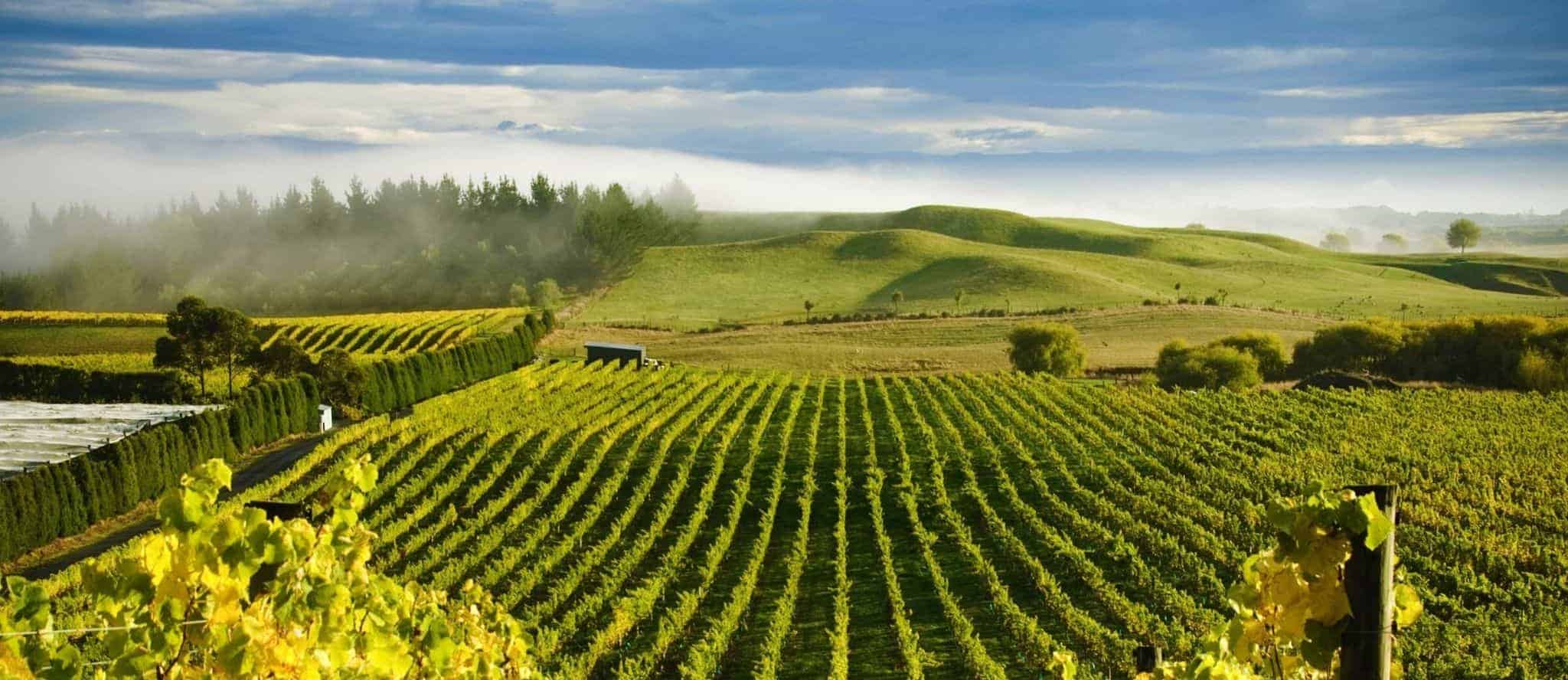 Most people globally think of white wine when they think of New Zealand. For Hawke’s Bay it is not quite the same. The region is best known for producing premium red wine, but that isn’t to say there are not amazing white wines produced in Hawke’s Bay. In fact many visitors after tasting Hawke’s Bay Sauvignon Blanc side by side with the famous Marlborough Sauvignon Blanc find they prefer the Hawke’s Bay character profile. Expect more tropical characters, stone fruit and complexity with superb mouthfeel and texture from the whites out of Hawke’s Bay.
Most people globally think of white wine when they think of New Zealand. For Hawke’s Bay it is not quite the same. The region is best known for producing premium red wine, but that isn’t to say there are not amazing white wines produced in Hawke’s Bay. In fact many visitors after tasting Hawke’s Bay Sauvignon Blanc side by side with the famous Marlborough Sauvignon Blanc find they prefer the Hawke’s Bay character profile. Expect more tropical characters, stone fruit and complexity with superb mouthfeel and texture from the whites out of Hawke’s Bay.
Chardonnay from Hawke’s Bay
Ask any winemaker in Hawke’s Bay what their favourite grape is and the answer will most likely be that it is Chardonnay. Chardonnay is the most planted white grape in the world because it is so amazingly versatile. Its versatility has no limits, it can grow in the limestone soils of Chablis or the hot free draining terroir of Napa. Most importantly it is versatile in its style. Chardonnay gives the winemaker a unique ability to craft wine using different techniques.
Chardonnay can be made into Sparkling Wine (such as in Champagne) or premium table wine like that of Burgundy, It can be aged in oak or have no oak contact at all, undergo malolactic fermentation to introduce creamy characters… and the list goes on and on! How could a winemaker not get excited with all the possibilities?
The same can be said for Hawke’s Bay Chardonnay. You will find great examples of Hawke’s Bay Chardonnay in the cool coastal region of Te Awanga, the hot Gimblett Gravels and everything in between. Just like elsewhere in the world Hawke’s Bay Chardonnay comes with a range of flavour profiles and can range from every day drinking wines to super premium wines.
Our favourite Chardonnays in the region at the moment are wines with concentrated stone fruit characters that are exquisitely balanced. Generally the Chardonnay can be described as medium bodied wines although some of the great coastal Chardonnay dances along the Chablis style with light citrus notes and minerality.
 Recommendations: Vidal Legacy Chardonnay is such a beautifully elegant wine with great balance. It is an age worthy example of how great Hawke’s Bay Chardonnay can be.
Recommendations: Vidal Legacy Chardonnay is such a beautifully elegant wine with great balance. It is an age worthy example of how great Hawke’s Bay Chardonnay can be.
Viognier from Hawke’s Bay
Viognier is a white grape with an unknown origin but is most often associated with the Rhone Valley in France (Condrieu to be specific). In 1965 the grape was so rare that there were only 8 acres planted in the world! (in Northern Rhone in France). Thankfully the vines were looked after and the grape has experienced a resurgence thanks in part to the Aussies & Viognier’s interesting ability to make red wines darker and more perfumed when a small amount is added to the blend.
Viognier is an extremely difficult grape to grow because it is vulnerable to powdery mildew and has very low and inconsistent yields. Viognier also has a very small window of when it should be picked – too early and the wine fails to develop its signature aromas of apricots, too late and the wine loses its acidity and becomes too oily and flabby. Sounds like too much trouble right!?… Wrong. When Viognier is made well it is such a joy to drink, it is totally understandable why winemakers persist with this amazing variety.
Hawke’s Bay has really embraced the difficulty of producing premium Viognier. Like most of the best examples in the world Hawke’s Bay examples have the signature apricots and white flowers, warm spice and candied ginger aromas. The wines are medium bodied and are often described as great white wines to try for people who generally prefer drinking red wines.
 Recommendations: De La Terre Viognier is crafted by the extremely talented Tony Prichard. Tony makes Viognier from a number of different sites in Hawke’s Bay and focuses on producing wines that showcase different varietal expressions. The hand made Cellar door building at De La Terre is worth a visit in its own right! Bay Tours can organise Private Tours to visit Tony & Kaye at the De La Terre Winery.
Recommendations: De La Terre Viognier is crafted by the extremely talented Tony Prichard. Tony makes Viognier from a number of different sites in Hawke’s Bay and focuses on producing wines that showcase different varietal expressions. The hand made Cellar door building at De La Terre is worth a visit in its own right! Bay Tours can organise Private Tours to visit Tony & Kaye at the De La Terre Winery.
Sauvignon Blanc from Hawke’s Bay
New Zealand’s most planted grape also has a home in Hawke’s Bay. There is 3 times more Sauvignon Blanc planted than Syrah despite Hawke’s Bay being known for its premium red wine. Hawke’s Bay Sauvignon Blanc is very different to the style of wine made in Marlborough. Something we think is great, if you would like to try wines with a little more texture and less mouth puckering acidity, Hawke’s Bay Sauvignon Blanc could very well become your next new favourite wine.
With Hawke’s Bay wines expect more tropical fruit flavours, more mouthfeel and texture thanks to often adding a little Semillon and less green characters and punching acidity.
The main reason for the difference in style between Hawke’s Bay Sauvignon Blanc and Marlborough Sauvignon Blanc is the different diurnal range of temperatures. Hawke’s Bay’s temperature doesn’t drop so cold overnight during the summer months which means the grapes become a touch riper and don’t retain the unique punchy acidity that has made Marlborough world famous (and can often be a little too much for consumers).
We are not here to bad mouth Marlborough but instead highlight Hawke’s Bay’s unique wines… if you don’t like the punchy acidity of Marlborough Sauvignon Blanc give Hawke’s Bay Sauvignon a go!
 Recommendations: Te Mata Estate producers one of the most textural Sauvignon Blancs in the country thanks to the small additions of Semillon and Sauvignon Gris to their blend. Give the Te Mata Estate Cape Crest a try.
Recommendations: Te Mata Estate producers one of the most textural Sauvignon Blancs in the country thanks to the small additions of Semillon and Sauvignon Gris to their blend. Give the Te Mata Estate Cape Crest a try.
Benefits of Joining a Bay Tours Wine tour:
- Local Knowledge & Insight – This article is just the tip of the iceberg. Your tour guide will have an enormous amount of local stories and insights to share with you about the Hawke’s Bay wine industry and the region in general!
- Meet like-minded Travellers & Wine Lovers – There is nothing more satisfying than seeing how well our guests get on with one and other. By the end of the tour it is not unusual for guests to organise to have dinner and drinks at a local restaurant – Or even join our evening tour together.
- Stress-Free – On a Bay Tours wine tour everything is organised and covered for you. That means no corkage fees to worry about, no having to phone ahead to secure a tasting slot, no time spent organising the most efficient route to get to the wineries. Sit back relax and take in the views!
- No need for a sober driver – The New Zealand drinking and driving laws are pretty strict compared to other regions of the world. This is good, it means the roads are safer but it does also mean someone in your group can’t taste if you elect to drive. With a Bay Tours wine tour we will pick you up and drop you off at your accommodation. There is no need to risk driving over the limit.
- We only take you to our Favourite wineries – We understand most people visiting Napier only have a day or two up their sleeve so it is important to get the most out of their visit. We take you to wineries that have great cellar door experiences but most importantly we think the wines are great & we hope you will too!
All Wine, Beer & Cider tours can be booked directly online here or email support@baytours.co.nz to organise a custom tour of the region.

